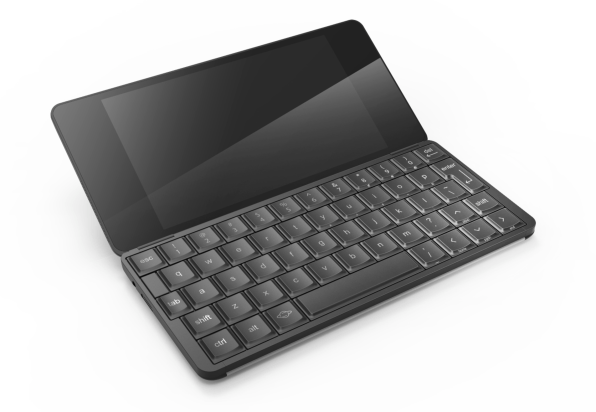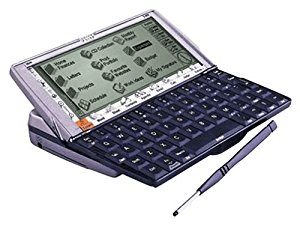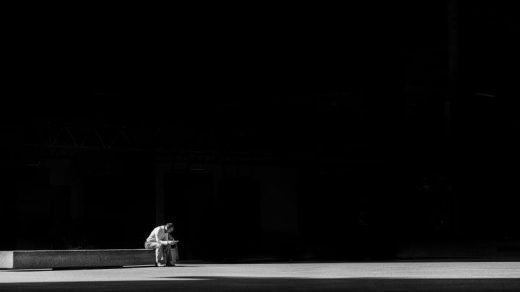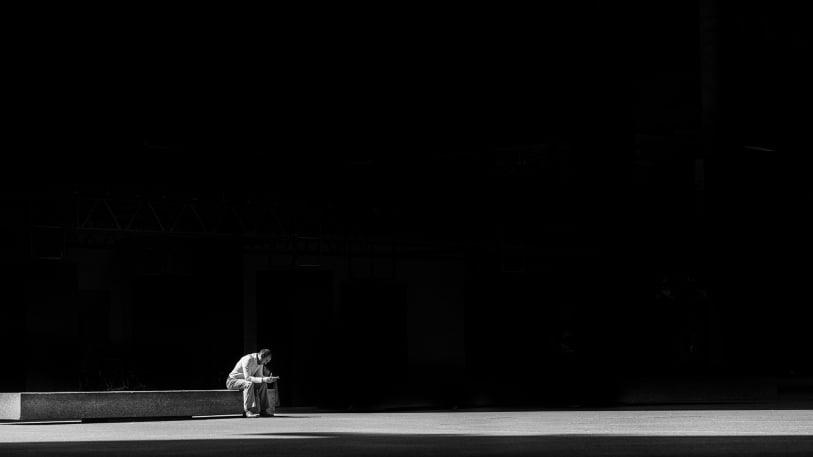There’s More To The Smartphone Nostalgia Trip Than Meets The Eye
Nostalgia is a powerful feeling.
That’s why the public’s longing for a better, simpler past is increasingly being exploited by Hollywood, politicians, and marketers as an effective way to win fans. And tech is not immune.
Take Nintendo, for example. The company introduced a blatant appeal to nostalgia in November: The NES Classic. The gaming console looks like a smaller version of the original, complete with an ’80s-era game controller and built-in classic Nintendo games. Some consumers are even opting out of the digital revolution for content, using Polaroid-style instant cameras instead of smartphones and spending money on turntables and vinyl record albums instead of Spotify subscriptions. Even music cassette tapes are making a comeback.
The smartphone market also finds itself in the grip of a nostalgia craze. In recent weeks we’ve seen companies announce or hint at products designed to remind users of old-school devices like the Nokia 3310, BlackBerry devices, the Psion PDA, and Motorola’s Razr. These products’ heydays all date from before the iPhone shipped in 2007, an event that ushered in the smartphone market’s Tyranny of the Rectangle.
Years ago, mobile devices came in all shapes, sizes, and form factors. Some were tiny and solid. Others had “flip-phone” functionality. Some featured laptop-like clamshell designs. And all had physical keyboards.
And taking a new pass at these ideas in 2017 is not just about retro hipsterism. Most change in technology is for the better, but sometimes progress leaves superior features behind. The new wave of nostalgia has given us, and the industry, permission to reconsider good ideas abandoned prematurely. Here are a few.
The Inexpensive, Indestructible Phone
One of the most talked-about products at Mobile World Congress in Barcelona last month was a throwback to another era: The Nokia 3310.
The original Nokia 3310 sold from 2000 to 2005. It offered a sturdy, rounded candy-bar design with oval buttons and a tiny screen.
(The phone’s design is so closely associated with Nokia, and Nokia with Finland, that a cartoon version of the 3310 was designated in 2015 as one of the first “national emojis” representing Finland. The emoji is called “Unbreakable.”)

The new Nokia 3310 is being made by a Chinese company called HMD Global, which has licensed Nokia’s branding and design.
The phone is half as thick as the original, and has been updated with a larger, higher-resolution color screen, a 2-megapixel camera, a microSD slot, and the ability to go online via the Opera Mini browser and an old-timey 2G connection. You charge the battery with a microUSB port.
This new 3310 runs Android. But you can’t use messaging apps. And there’s no GPS. The most important feature retained from the original is the game Snake.
Two big differences between today’s smartphones and tomorrow’s Nokia 3310 are price and battery life. Due in June, the phone should cost roughly $50 and it provides 22 hours of talk time or 31 days standby, according to the company.
The phone is getting a lot of press, but only some of that attention is based on nostalgia. Some potential buyers I queried on Google Plus pointed out the practical benefits of its old-school design. For example: It’s handy to insert into a pocket, even with keys, when you want to run out of the house for a moment.
Another pointed to the growing trend of customs officials demanding that travelers unlock their smartphones for inspection of their social networking activity. Carrying a Nokia 3310 while traveling would remove the security and privacy risk of phone searches. In an age of paranoia, privacy, and information overload, is the lack of GPS and social networking apps a bug–or a feature?
Others pointed out that older users who want to make calls but have no need for a smartphone might enjoy one. And lots of commenters like the idea of a “backup” or “burner” phone.
The bottom line: Nostalgia or not, the Nokia 3310 is a compelling product for many consumers.
Let’s Get Physical
BlackBerry, the company formerly called Research In Motion, or RIM, dominated the “interactive pager” market in the late ’90s. Users loved their addictive BlackBerry keyboards so much they called RIM devices “CrackBerrys.”
When the world transitioned to smartphones, RIM brought their keyboard innovations to the phone. But in the wake of the iPhone, like all alternative form factors, BlackBerry devices were mostly swept aside in favor of rectangle smartphones and on-screen “virtual” keyboards.
The upcoming BlackBerry KEYone smartphone is widely considered the final BlackBerry-designed smartphone with a physical keyboard. Like the Nokia 3310, the KEYone is being manufactured by a Chinese company, in this case TCL Communication Technology Holdings. BlackBerry makes the software, which is based on Android. The phone is set to go on sale in early April and will cost $549.

As you would expect, the phone has a smaller screen to make way for the keyboard–a 4.5-inch screen that sports an unusual 3:2 ratio.
The KEYone keyboard is a marvel of design and engineering. As with earlier BlackBerry models, the keys double as a touchpad, By grazing the top of the keys with your thumb, you can navigate the screen and do other touchpad-like actions. One such action is a gesture called “flick typing.” Instead of tapping words selected by predictive text, you simply swipe up over the keys and the suggested word appears in place. The phone enables up to 52 programmable shortcuts. Uniquely, its fingerprint reader is embedded in the keyboard’s spacebar.
The tiny but loyal BlackBerry fan base may buy KEYone phones. But will nostalgia for physical keyboards bring in new users? I doubt it. The reality is that the new phone doesn’t have an iconic look that reminds everyone of a bygone era.
If anything attracts new users, it will be the functionality enabled by the keyboard. Despite all the disadvantages of physical keyboards on smartphones, the KEYone is probably faster for typing.
BlackBerry’s target market for the KEYone is “power communicators,” according to Steve Cistulli, president and general manager of TCL Communication in North America. He told me “there’s more room in the market now for devices like KEYone because the smartphone market has matured”–which is another way to say that users are becoming bored with glass rectangle phones.
And BlackBerry focuses heavily on security, which could play well in a market with growing anxiety about privacy and hacking.
The BlackBerry KEYone may succeed or fail. But if it succeeds, it won’t be entirely because of nostalgia. Fast typing and high security are real and non-nostalgic reasons to buy one.
Return Of The Pocket Clamshell
And now we come to an idea that’s so compelling that it could persuade this iPhone fan to switch to Android.
A British company called Planet Computers has raised more than $480,000 from crowdfunders on Indiegogo to build and sell a mobile gadget called the Gemini PDA. Its aggressive timetable involves shipping the first units to campaign backers this November.
The Gemini is about the size of a large smartphone but has a clamshell design and QWERTY keyboard that extends from edge to edge and from front to back. It looks like a Psion Series 5, a classic PDA (Personal Digital Assistant) that first went on sale in 1997, or the same company’s Revo, which came out two years later.

While the Psion ran the OS later known as Symbian, sported a low-res monochrome screen, and had no connectivity aside from a PC cable and infrared port, the Gemini has all the bells and whistles of a modern smartphone. It runs Android and dual-boots Linux. One version is Wi-Fi only, and another offers Wi-Fi plus 4G connectivity.
The similarity with Psion isn’t coincidental. A major designer responsible for many of the Psion’s innovations, Martin Riddiford, headed the design of the Gemini PDA. He currently runs a design firm called Therefore, which designed the Gemini.

Riddiford told me the Gemini is similar to the Psion Series 5, but more compact and premium feeling. (The outer case is stainless steel, versus Psion’s plastic.)
The design creates the illusion that when it’s closed, it’s a very small device, but when open appears very large, almost like a small laptop, according to Riddiford, thanks to a “strong over-center hinge mechanism.”
He also points out that people embrace rectangle smartphones instead of phones with physical keyboards in order to maximize screen space. But when the virtual keyboard is on-screen, it reduces the availability of screen real estate for non-keyboard use. The Gemini, however, enables full use of the full screen, even while typing.
Riddiford believes the Gemini PDA will succeed in part because it targets several markets, including Linux programmers, the financial services community, “anti virtual keyboard users,” and older people frustrated with tiny screens and even tinier on-screen keyboards. (He didn’t mention–ahem!–tech journalists and other writers.)
Planet Computers CEO Janko Mrsic-Flogel told me the project has two aims. One is to offer a better Android phone for “the everyday blogger, writer, or professional,” and the other is to give Linux users an open 4G platform to build on.
Planet is “keeping the form factor roughly the same while using the latest technology for screens, processors, [and] communications inside. It’s a bit like Volkswagen bringing back the Beetle,” according to Mrsic-Flogel.
The Psion references go beyond the identifiable keyboard and clamshell hardware. Mrsic-Flogel says the Gemini PDA will come with an Agenda app that will reflect “the very popular weekly landscape view that used to be on the Psion.”
The Gemini PDA is a nostalgia product with value beyond nostalgia. The clamshell approach to a smartphone makes sense for a wide range of typing-centric users.
Where Have You Gone, Moto Razr?
Not every good idea from tech’s past is on its way back–at least yet. Motorola’s first Razr shipped in 2004, and it was an iconic, quasi-futuristic, super-thin flip phone–the best-selling model of its era.
The rights to the Razr design and brand were part of the acquisition of Motorola by Google in 2011, then part of what Google sold to Chinese consumer electronics giant Lenovo in 2014. Motorola is now a Lenovo company.
With Mobile World Congress buzzing about the return of the Nokia 3310, Lenovo CEO Yang Yuanqing said in an interview there that Motorola should think about how to “leverage” nostalgia for the Razr. “Whatever we bring back, it has to be a stronger product than the original,” he said.
I reached out to Motorola chief marketing officer Jan Huckfeldt, who told me that “Motorola is not rereleasing the Razr, but nothing says we could not decide to use it again someday.”
The flip-phone idea is one of the great ideas sacrificed for the rectangle revolution. Flip phones offer protection of both physical keyboards and screens when closed. And they’re fun to use–you get to dramatically “hang up” on people by snapping the phone shut.
Smartphone fans are fickle creatures. They love their shiny new device–for a while. But over time, they start craving different experiences, capabilities, and ideas.
Usually, “different” comes in the form of something new–new features, new technologies, and new form-factors.
But “different” can also come from something old. Many current users of smartphones have never experienced monthlong battery life, flip phones, physical keyboards, or clamshell handhelds.
What’s old is suddenly new again.
And what’s new–the boring rectangle smartphone–suddenly feels old.
Fast Company , Read Full Story
(59)














